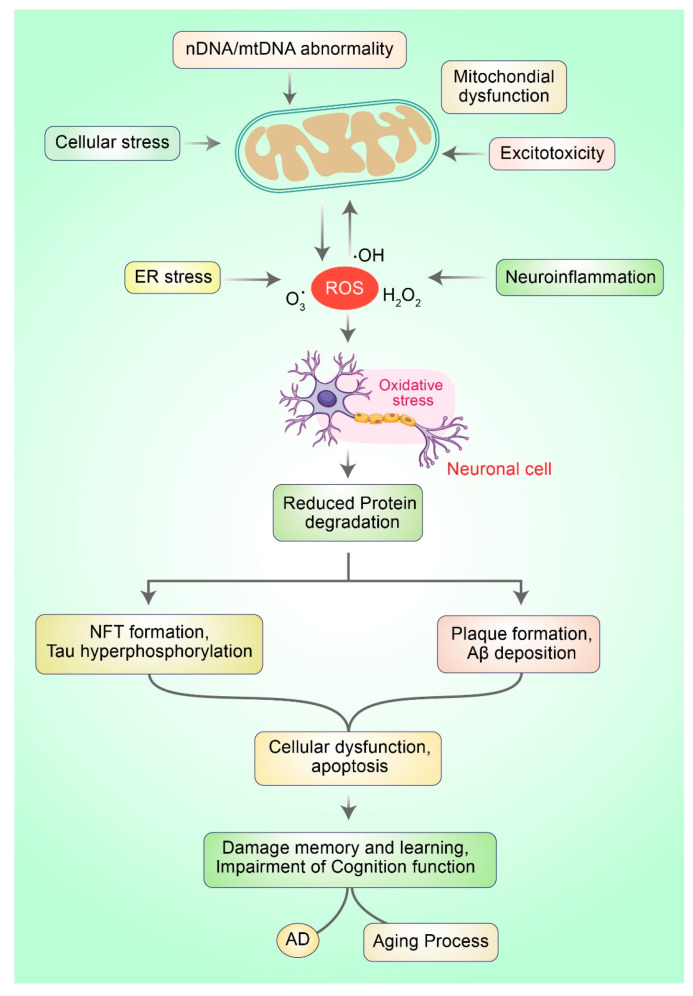Figure 1.
Mitochondrial dysfunction and oxidative stress in neurons lead to the development of AD. Typically, ROS are produced via numerous mechanisms such as ER stress, mitochondrial dysfunction, neuroinflammation, and excitotoxicity. Excessive ROS generation leads to oxi-dative stress (OS), which is responsible for mitochondrial dysfunction. OS prevents the deg-radation of protein molecules and impairs the clearance of misfolded proteins, which subse-quently leads to protein aggregation causing neuronal death and AD.

